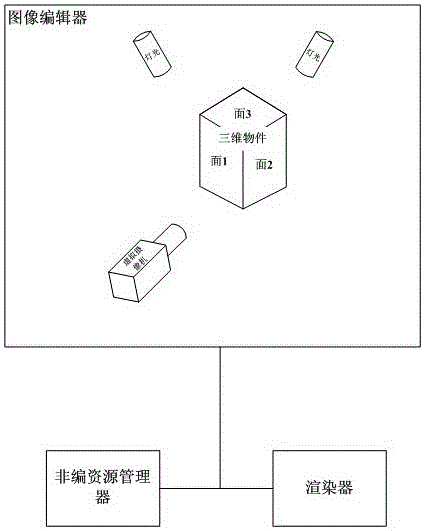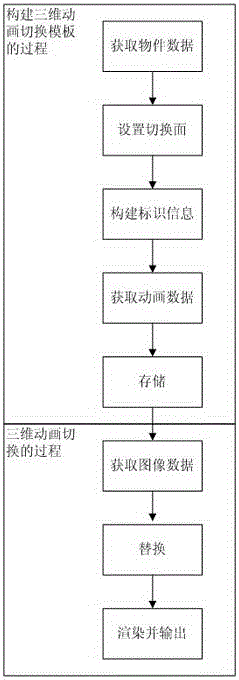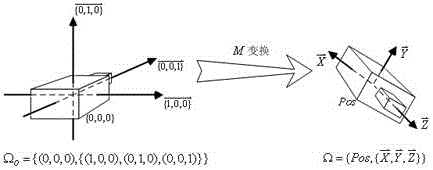Method for processing video transitions through three-dimensional model
A 3D model and 3D technology, applied in image data processing, animation production, instruments, etc., can solve the problems that 3D transitions cannot be realized, and achieve the effect of fast video switching and editing, and the editing process is simple
- Summary
- Abstract
- Description
- Claims
- Application Information
AI Technical Summary
Problems solved by technology
Method used
Image
Examples
Embodiment 1
[0037] This embodiment is a method for processing video transitions using a three-dimensional model. The system used in the method includes: an image editor, a non-editing resource manager, and a renderer arranged in a server or server cluster. The image editor There is a 3D model building unit in the device, which is used to build 3D objects, virtual cameras, virtual lights and make their animations, such as figure 1 shown.
[0038] The image editor can be various non-linear editing systems, which can use 3D model files such as .fbx, .obj, .3ds, etc. generated by third-party CG software such as 3DSMAX and MAYA. These editing systems have built-in 3D model building units, which can create 3D objects, virtual cameras, virtual lights, etc. and create animations, and can perform secondary development on imported 3D models.
[0039] The non-linear editing resource manager is a resource library used to store various materials used in editing, templates, and storyboards generated d...
Embodiment 2
[0064] This embodiment is an improvement of the first embodiment, and is a refinement of the "automatic detection" in the "step of marking the replacement surface" in the first embodiment. The "automatic detection" mode described in this embodiment includes the following sub-steps:
[0065] The sub-step of identifying the three-dimensional model data: identifying the object data and virtual camera observation point data used as the start point and end point of the animation of the three-dimensional model for switching.
[0066] The sub-step of 3D object marking: use the relative positional relationship between the virtual camera and the 3D object to determine the replacement surface before and after the transition of the two videos. The method for automatic marking of 3D objects refers to finding two target objects closest to the camera as replacement objects at the start and end positions of the virtual camera animation, based on the spatial positional relationship between th...
PUM
 Login to View More
Login to View More Abstract
Description
Claims
Application Information
 Login to View More
Login to View More - R&D
- Intellectual Property
- Life Sciences
- Materials
- Tech Scout
- Unparalleled Data Quality
- Higher Quality Content
- 60% Fewer Hallucinations
Browse by: Latest US Patents, China's latest patents, Technical Efficacy Thesaurus, Application Domain, Technology Topic, Popular Technical Reports.
© 2025 PatSnap. All rights reserved.Legal|Privacy policy|Modern Slavery Act Transparency Statement|Sitemap|About US| Contact US: help@patsnap.com



